What Gives Wood its Odor?
The majority of the identified odorants in wood from one study were 1) fatty acid degradation products 2) terpenoic substances and 3) odorous substances resulting from the degradation of lignin. (Source)
1. Fatty acid degradation products (69% of the odor of wood!)
These include alkenals, ketones, alkylic acids and intramolecular esters.
Examples include pentanal, hexanal (grassy odors), octanal, nonanal, linalool (citrus-like odors), (E)-non-2-enal, (E,E)-nona-2,4-dienal (fatty odors), butanoic acid (cheese-like odors) and γ-octalactone, γ-nonalactone (coconut-like peach odors).
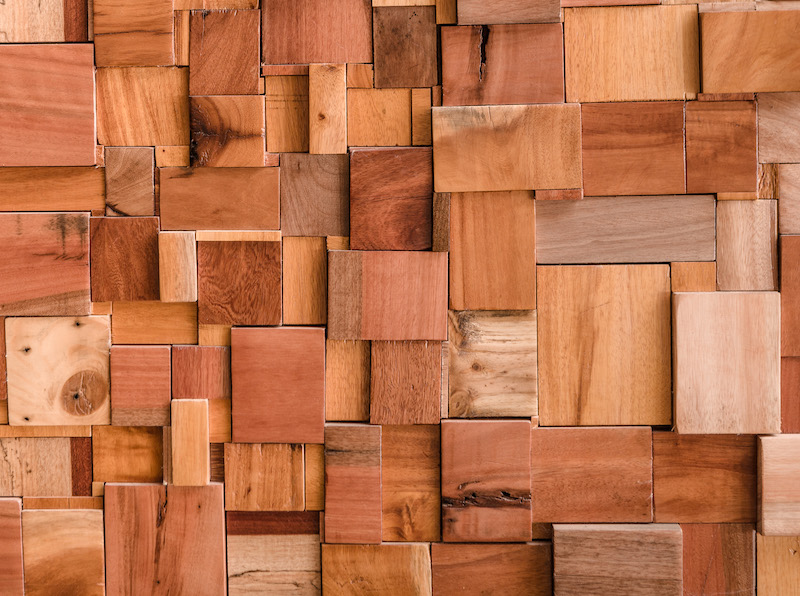
2. Terpenes (13% of the odor of wood)
Terpenes are unsaturated hydrocarbons that are produced predominantly by plants.
Terpenes (and terpenoids) are the main constituents of the essential oils from plants – but the two are not interchangeable terms.
Examples of terpenes in wood include α-pinene, β-pinene, limonene, Δ3-carene, and camphene.
3. Phenyl compounds from lignin degradation (13% of the odor of wood)
Odor-active phenyl derivatives include vanillin, 3-phenylpropanoic acid, phenylacetic acid, p-cresol, and thymoquinone.
(Source)
The products from the breakdown of lignin and cellulose produce formaldehyde as a secondary compound. Source
This article contains affiliate links, upon purchase I make a small commission at no extra cost to you.
Naturally Occurring Formaldehyde Levels in Wood
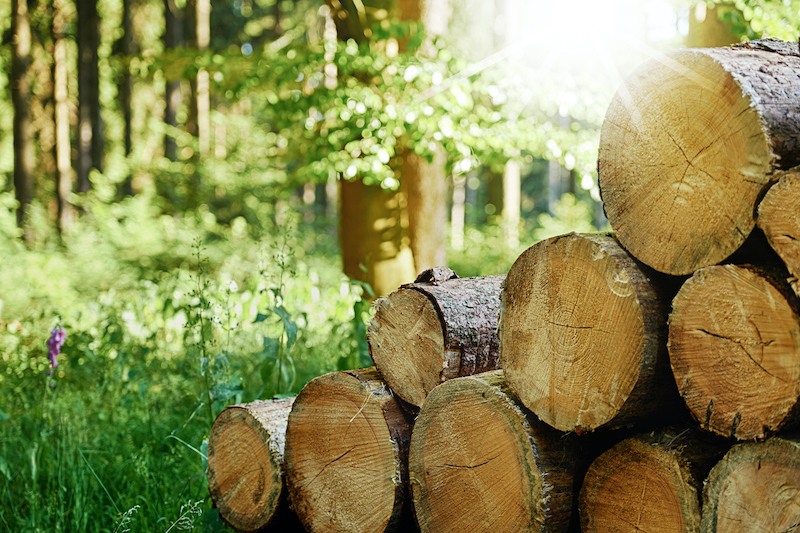
The natural formaldehyde content in wood is not the main factor that makes a wood species higher in odor.
One study found that the softwoods they examined had higher formaldehyde contents than the hardwoods.
There was also a difference between juvenile and mature wood.
The average formaldehyde values were:
- Pine at 0.54 mg/100 g
- Spruce at 0.47 mg/100 g
- Oak at 0.36 mg/100 g
- Beech at 0.27 mg/100 g
- Poplar at 0.29 mg/100 g
(As a reference point, E1 allows formaldehyde at at least 20 x this with contents up to 8 mg/100 g or 0.1 ppm released. CARB II allows half that amount, so 10 x more than pine’s natural content).
Pine is known as a higher-odor wood in general, with formaldehyde being just one volatile compound that the wood gives off.
Though the formaldehyde levels in oak are on the lower level, oak is still a relatively fragrant wood.
Examples of Odorants Found In Trees/Wood
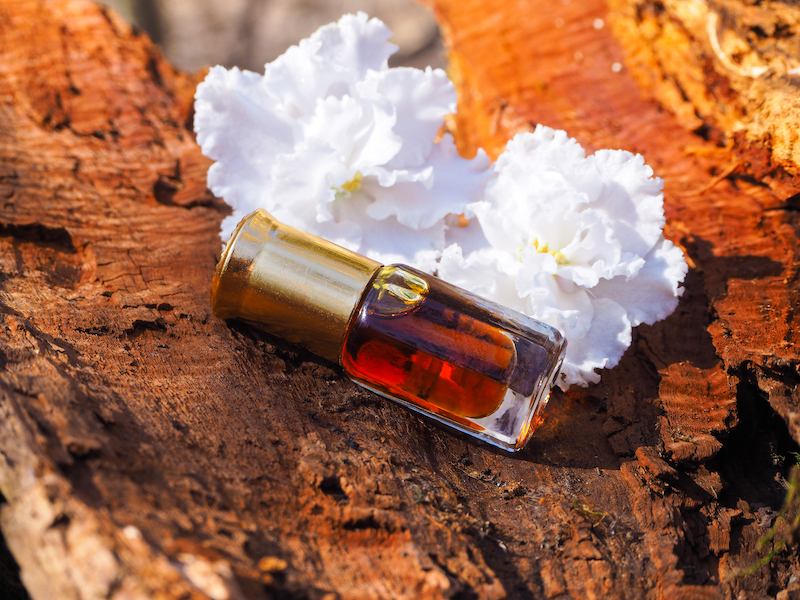
One study looked closely at pine. They found that in pine, the odorants (which include terpenes) are:
- (E,E)-nona-2,4-dienal
- vanillin
- phenylacetic acid
- 3-phenylpropanoic acid
- δ-octalactone
- α-pinene
In fir wood the following terpenes have been identified:
- α-pinene
- β-pinene
- limonene
- Δ3-carene
- camphene
- β-phellandrene
- myrcene
Woods That are Low Odor
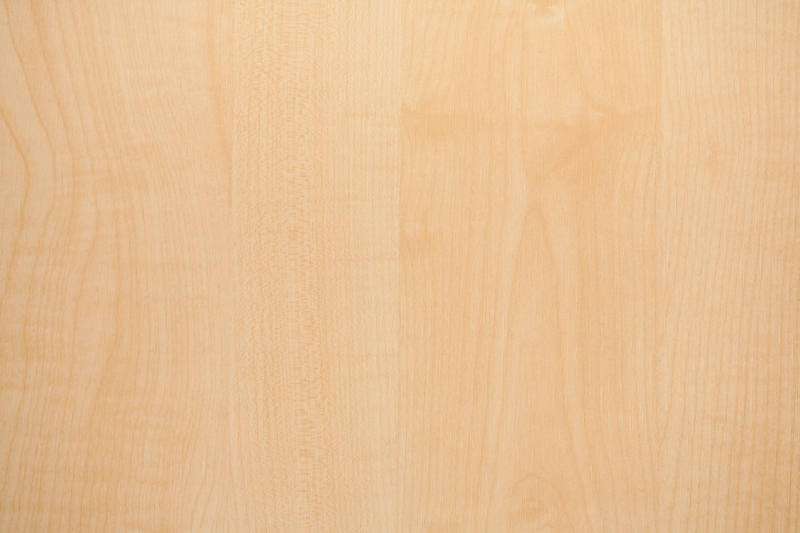
Lowest Odor Woods
Maple and poplar are low-odor woods that the chemical sensitive usually do the best with.
Aspen is a type of poplar (usually Populus tremuloides in North America) and it is also likely to be tolerable for many people.
Many find hickory to be low odor as well.
Birch works well for many chemically sensitive people too.
Medium Level Odor Woods
Oak is a somewhat fragrant wood when it is fresh (though not as much as cedar and pine). It’s higher in odor than most people think.
Those sensitive to wood odor vary in their ability to tolerate oak. In a poll of chemically sensitive folks, it ranked quite high on tolerability.
Walnut and cherry are also mildly aromatic. Because we are all so different there are some people who do better with walnut or cherry over the lower odor woods.
Woods That are High in Odor
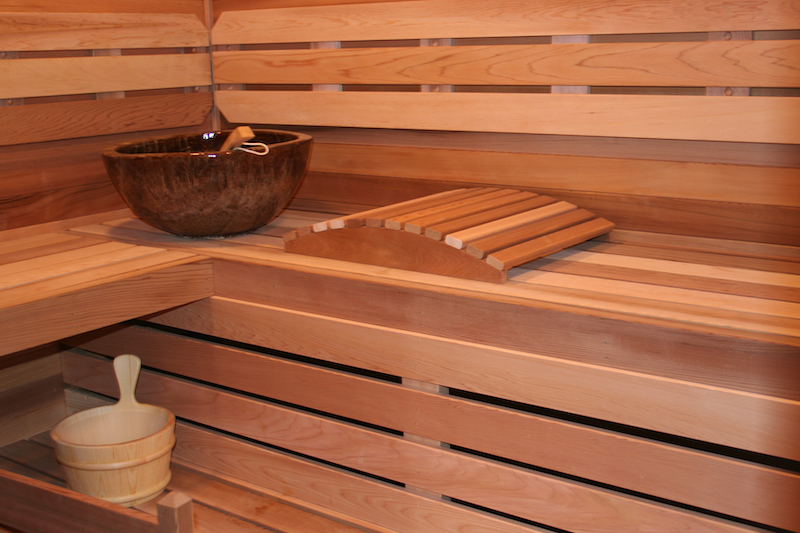
Most Fragrant Woods
Among commonly used woods used in buildings in North America, cedar is the higest odor.
The most fragrant woods include cedar (varies species), Brazillian Rosewood, and Sandlewood. But you won’t find much Rosewood and Sandlewood in homes.
Next up as the most fragrant are pine, fir, and spruce. Pine, fir, and spruce are commonly used as the woods in framing a home and in structural plywoods.
The Best Wood Species for Those with Chemical Sensitivities
Those with sensitivities to the natural odors and VOCs in wood vary greatly in which species we do well with.
Make sure to get samples of the woods so you can check them out for yourself.
Make sure the wood samples are relatively fresh. You will notice a big difference between wood that is more recently felled and cut and older wood.
I have received wood flooring samples that were old enough to have essentially lost their odor.
I have also received samples of solid wood flooring that had noticeably picked up odors from the hardware store, such as glues and other chemicals. Be sure to ask that the samples are coming from the same source as the final flooring.
Sealing in the Odor of Wood
For most people, a primer and a couple of coats of regular zero-VOC acrylic paint like ECOS will be enough to seal in the odor of wood.
If you are sealing pine be sure to use the tannin blocking primer so you don’t bleed through splotches.
You can also use clear coatings. AFM Acrylacq is good at blocking most of the smell.
Even better is shellac (you can make your own with flakes mixed with alcohol). But shellac is shiny and is a partial vapor barrier (it’s also not that great with water) so you are limited in where you can use it.
If it’s a wood floor then you generally don’t use acrylics (definitely not AFM Acrylacq on the floor). The UV-cured polyurethane on “prefinished” hardwood floors is a great block of the odor.
If you need to finish the wood floors in-house you have to make a compromise. You won’t get as good of an odor seal unless you use shellac as a finish. Shellac is not as durable as the factory finishes.
If you want a more conventional floor finish that still blocks odors then I would consider Earthpaint Nanotech, which is not as good of a seal of odor as shellac or the factory finish but is better than most floor finishes.
The higher gloss the finish the more of a block you will get.
Corinne Segura holds certificates in Building Biology, Healthier Materials and Sustainable Buildings, and more. She has 10 years of experience helping others create healthy homes.
If you would like to support the research behind this blog you can make a donation via Kofi!
Sources:


Sky
Hi Corrine,
Thank you so much for your site.
What to do about “old house smell” and old wood if trying to redo a 1950’s home in the PNW with its climate? If taking all the walls down and getting to the studs and frame of the house. Would sealing the wood work? Severe MCS sufferer here.
Corinne
Old house smell is mold/the mVOCs from mold. I would not seal structural elements as structural wood actually must retain it’s ability to take on and let go of moisture in the air.
Sky
Yes, that’s what I think, too, and have read over and over again that it is mVOCs. So, you are saying there’s not really a way to make it work from remodelling since you don’t recommend sealing structural wood. Many older homes even starting in the 1980’s start to have the old house smell in the PNW. What do you recommend in this case if structural wood shouldn’t be sealed?
Corinne
I don’t have a good solution for that.
Sky
What would be the reason not to seal structural wooed? Is it because it needs to be able to contract and expand?
Kate
Hi Corinne,
I have a plywood wall that has finished offgassing but the timber smell is affecting me.how long does it typically take for the timber smell to go away? I’m guessing years.I want to seal woth shellac. what do you think? How many layers? And should I send the plywood first? Thanks
Corinne
the articles goes over sealers for sealing in wood odor
kate
Okay thank you.do you think this product would be sufficient for dissolving shellac
https://www.sydneysolvents.com.au/ethanol-1-litre
Grain alcohol is very expensive in Australia
Corinne
if you mean dissolve as to make the shellac yourself you should follow directions from one of the good wood working sites. If you mean to remove shellac from a material any high percentage alcohol will work in my experience.
Ann
We bought a trailer that had some wood odor even though it is 14 years old. Should have known better. Anyway, we have sealed everything we can reach so it is better but it still smells to me. My husband can’t smell it anymore so we must have most of the sources. Charcoal does not appear to absorb the odor. Any suggestions ?
Corinne
I would look for the underlying cause of the wood sensitivity.